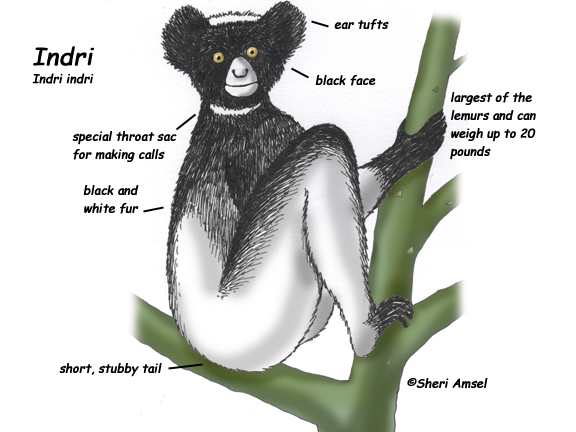

They are found on the island of Madagascar in the eastern forests.
They live in wet forests, up in the trees.
They have black and white fur and a black face with ear tufts. They are the largest of the lemurs and can weigh up to 20 pounds (10 kg). They can be more than 2 feet long including their short, stubby tail. They have a special throat sac for making calls.
They have a loud, eerie call and an alarm “bark.” They are active during the day (diurnal) living almost entirely up in the trees (arboreal) leaping from tree to tree. They are often seen in pairs.
They eat fruits, leaves and seeds.
They are endangered. They are killed by snakes eagles, fossa and man.
They are pregnant for about 5 months (gestation) and have 1 baby. They only give birth about once every 3 years.
Unknown lifespan in the wild, but in captivity, they can live up to 40 years. They are listed as endangered.
Kingdom: Animalia
Phylum: Chordata
Subphylum: Vertebrata
Class: Mammalia
Order: Primates
Suborder: Strepsirrhini
Family: Indriidae
Genus: Indri
Species: Indri indri
When you research information you must cite the reference. Citing for websites is different from citing from books, magazines and periodicals. The style of citing shown here is from the MLA Style Citations (Modern Language Association).
When citing a WEBSITE the general format is as follows.
Author Last Name, First Name(s). "Title: Subtitle of Part of Web Page, if appropriate." Title: Subtitle: Section of Page if appropriate. Sponsoring/Publishing Agency, If Given. Additional significant descriptive information. Date of Electronic Publication or other Date, such as Last Updated. Day Month Year of access < URL >.
Amsel, Sheri. "Indri" Exploring Nature Educational Resource ©2005-2024. March 28, 2024
< http://www.exploringnature.org/db/view/445 >

